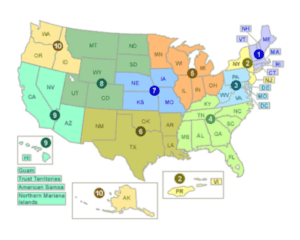EPA Reporting Basics for First Time Generators
November 10, 2014
Are you a first time hazardous waste generator? If so, there are many things you must consider, including the correct federal reporting procedures for your generated waste.
First, you must know what category of generator your company falls into. There are three categories according to the EPA, and each of them are based on how much waste you actually produce. In order of the largest hazardous waste producers, these three levels are termed,
- Large Quantity Generator (LQG),
- Small Quantity Generator (SQG), and
- Conditionally Exempt Small Quantity Generator (CESQG).
You may find additional information on each of these categories and how they work here.
But only Large Quantity Generators (LQGs) must worry about federal reporting guidelines. This would mean that your company overall generates more than 2,200 pounds (1,000 kilograms) of waste each month, or 2.2 pounds (1 kilogram) of acutely-toxic waste.
Conditionally Exempt Small Quantity Generators (CESQGs) are not required to submit any reports, yet Small Quantity Generators (SQGs) may have to keep manifests or reports of their generated hazardous waste depending on which state the company is in.
To first be able to be recognized as a hazardous waste generator, you must get an EPA ID number. The form to request an ID number is provided here. It’s easy: Fill it out, turn it in to your EPA regional office, and they will send you back an ID number.
Be sure to keep documentation of all your interactions with the EPA, other generators, and treatment, storage, and disposal facilities (TSDFs) going forward.
Next, you must start keeping EPA manifests, in which you will document your involvement with your hazardous waste “cradle-to-grave,” meaning from the time it is generated to when (and to whom) it is shipped off or transported to. More information about the manifest process and where to find the proper form is to be found here.
The Environmental Protection Agency, under its Resource Recovery and Conservation Act (RCRA) legislation, mandates that some LQGs and off-site treatment, storage, and disposal facilities (TSDFs) must submit a report to the government about their waste activities every two years. Called the National Biennial Hazardous Waste Report, it is due on March, 1st of every even-numbered year.
Although this is a federal rule, and many states require annual reporting, the full list of the states which do require this yearly report, along with other helpful information, may be found here.
All generators classified as LQGs (even if they only produced over 2,200 pounds of waste one month out of the year) must compile all their records from the two preceding years and submit them, either through the traditional form or electronically (PDF for electronic submission here) to the nearest EPA regional office.
If you are reporting to the EPA for the first time, it may seem like an overwhelming process. If you need help, call us at 800-936-2311 to speak with an expert today who will be able to answer all of your questions.
Photo credit: EPA.gov

